What is an adjective in English grammar – Learn the meaning, types, examples, and importance of adjectives in simple words with tips and examples.
When learning English, understanding the parts of speech is essential for forming meaningful sentences. One of the most important parts of speech is the adjective. In this article, we will answer the question: what is an adjective in English grammar, and explain how it is used to make your communication clearer and more expressive.
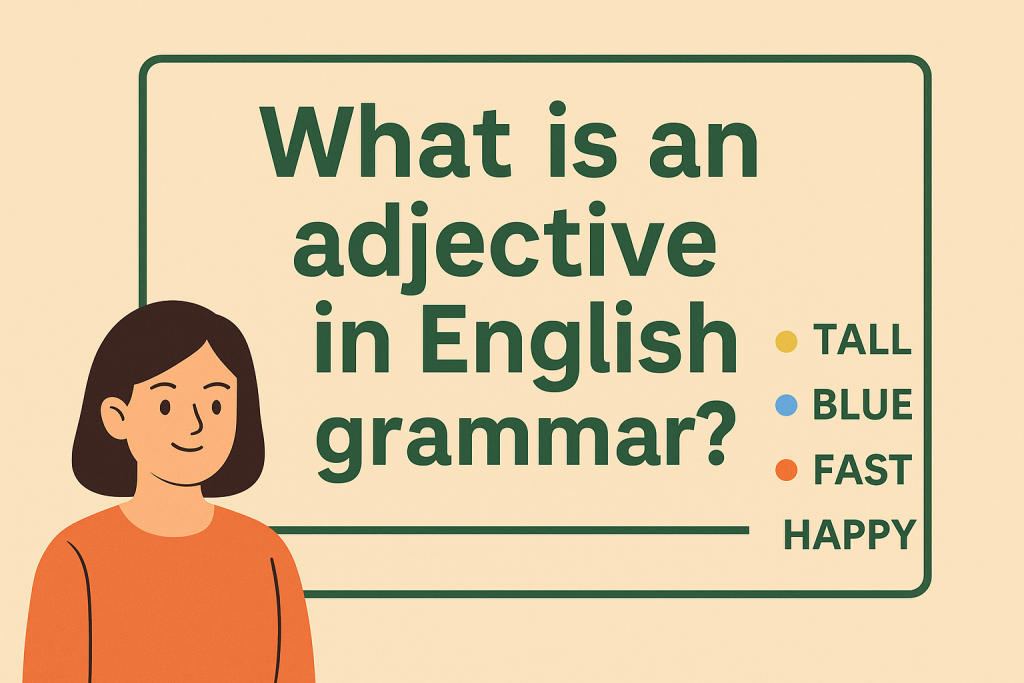
Definition of an Adjective
So, what is an adjective in English grammar? Simply put, an adjective is a word that describes or modifies a noun or a pronoun. It gives us more information about a person, place, thing, or idea. For example:
- The blue sky looked beautiful.
- She wore a long dress.
- He is a smart student.
In the above sentences, the words blue, long, and smart are adjectives. They give us extra information about the sky, the dress, and the student.
Types of Adjectives
To better understand what is an adjective in English grammar, it’s useful to know the different types of adjectives:
- Descriptive Adjectives: These describe the quality of a noun.
Example: happy, tall, cold, beautiful - Quantitative Adjectives: These tell us how much or how many.
Example: some, many, few, hundred - Demonstrative Adjectives: These point out specific things.
Example: this, that, these, those - Possessive Adjectives: These show ownership or relation.
Example: my, your, his, her, their - Interrogative Adjectives: These are used to ask questions.
Example: which, what, whose - Comparative and Superlative Adjectives: These compare two or more nouns.
Example: taller, shortest, more beautiful, most expensive
Position of Adjectives in Sentences
Now that we know what is an adjective in English grammar, let’s look at where adjectives appear in a sentence. Generally, adjectives are placed before the noun they modify:
- The happy child played in the garden.
Sometimes, adjectives come after a linking verb like is, seems, becomes, etc.:
- The soup is hot.
- She seems tired.
Adjective Order in English
When more than one adjective is used before a noun, there is a specific order to follow. Native speakers do this naturally, but learners should keep this in mind:
Quantity > Opinion > Size > Age > Shape > Color > Origin > Material > Purpose + Noun
Example:
- A beautiful large old round red Italian wooden dining table.
Though you may not always use so many adjectives together, knowing the order helps form natural-sounding sentences.
Why Adjectives Are Important
Understanding what is an adjective in English grammar helps improve both writing and speaking skills. Adjectives add color, detail, and personality to your language. Without adjectives, our sentences would be dull and unclear.
Compare these two sentences:
- I saw a dog.
- I saw a small brown friendly dog.
The second sentence gives a much clearer picture of the dog, thanks to the use of adjectives.
Tips for Using Adjectives Effectively
- Don’t overuse adjectives: Using too many adjectives can make your sentence confusing.
- Use appropriate comparisons: When comparing, use -er or more (e.g., smarter, more intelligent).
- Practice adjective order: Try combining multiple adjectives to see how they sound.
Conclusion
To sum up, what is an adjective in English grammar? It’s a word that describes or modifies nouns and pronouns, making our language more vivid and meaningful. Adjectives are a fundamental part of English grammar, and learning how to use them correctly can enhance your ability to express yourself in both writing and conversation.
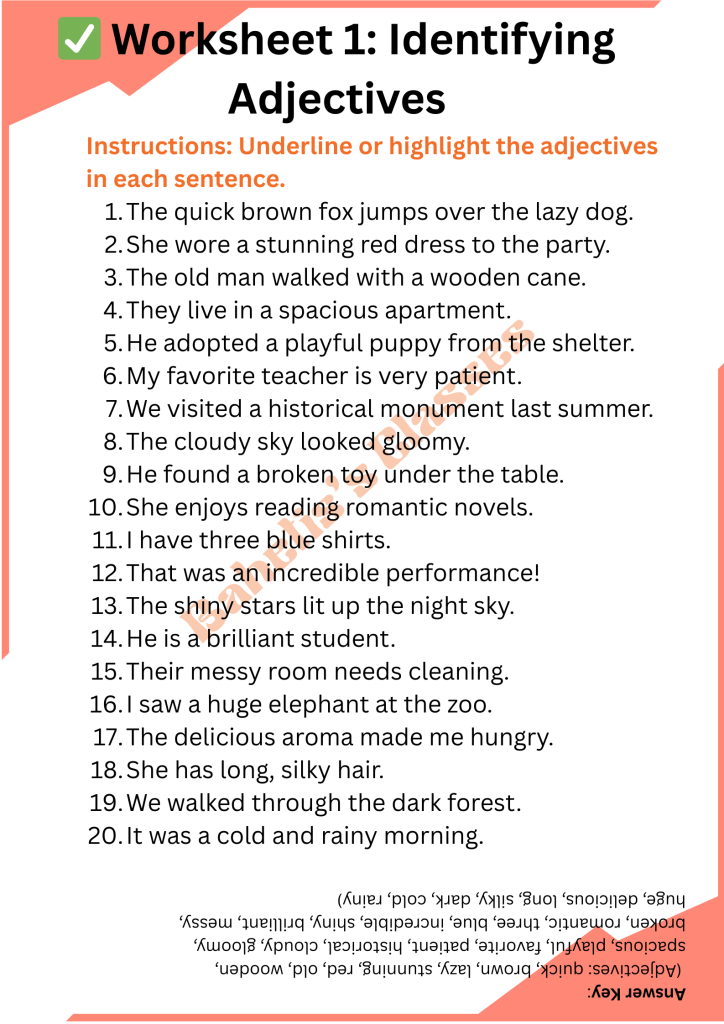
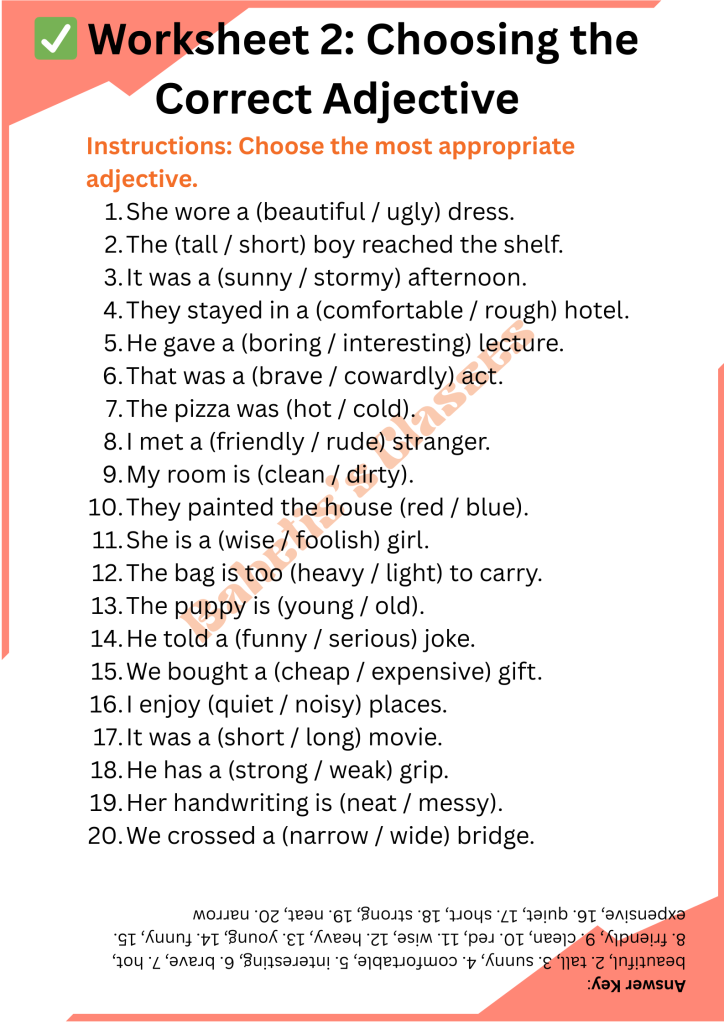
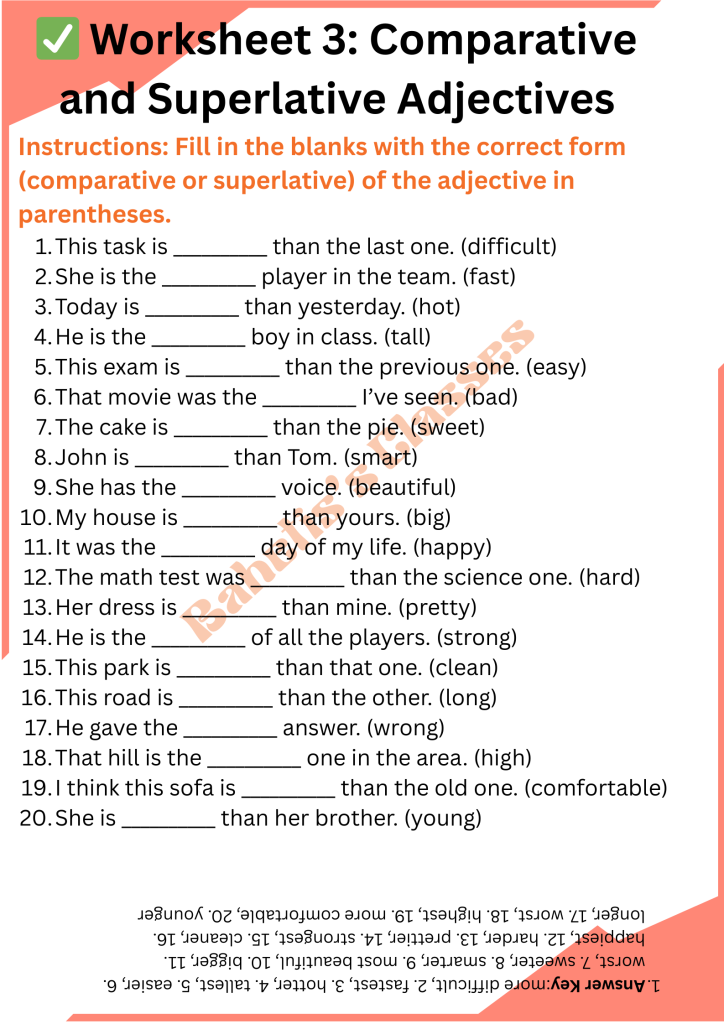
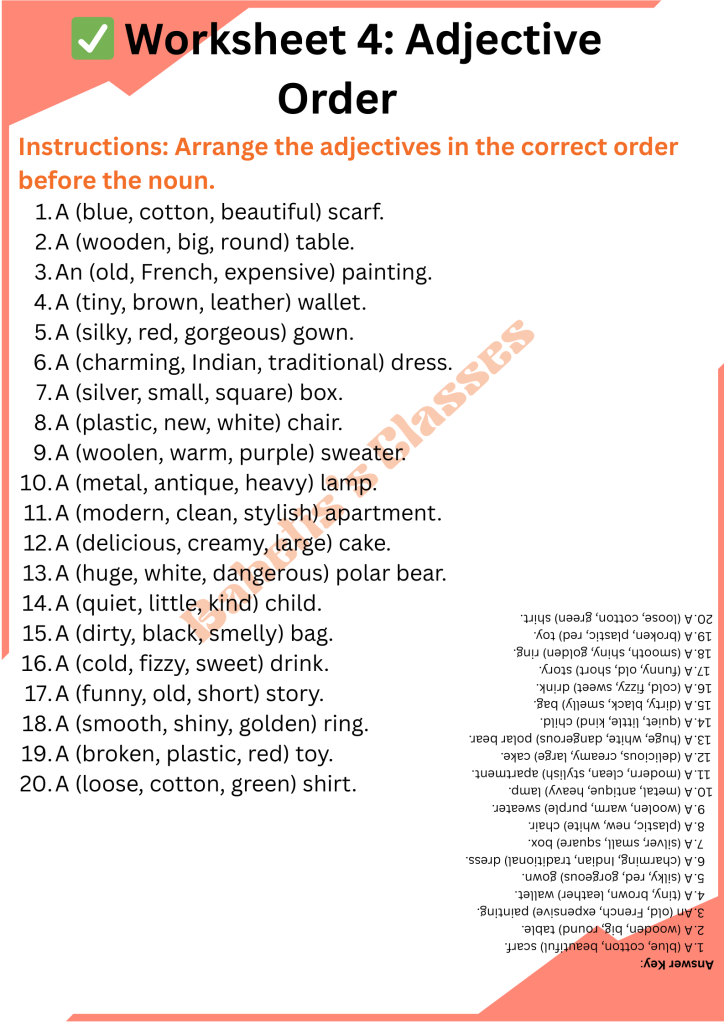
Please checkout what is a noun
